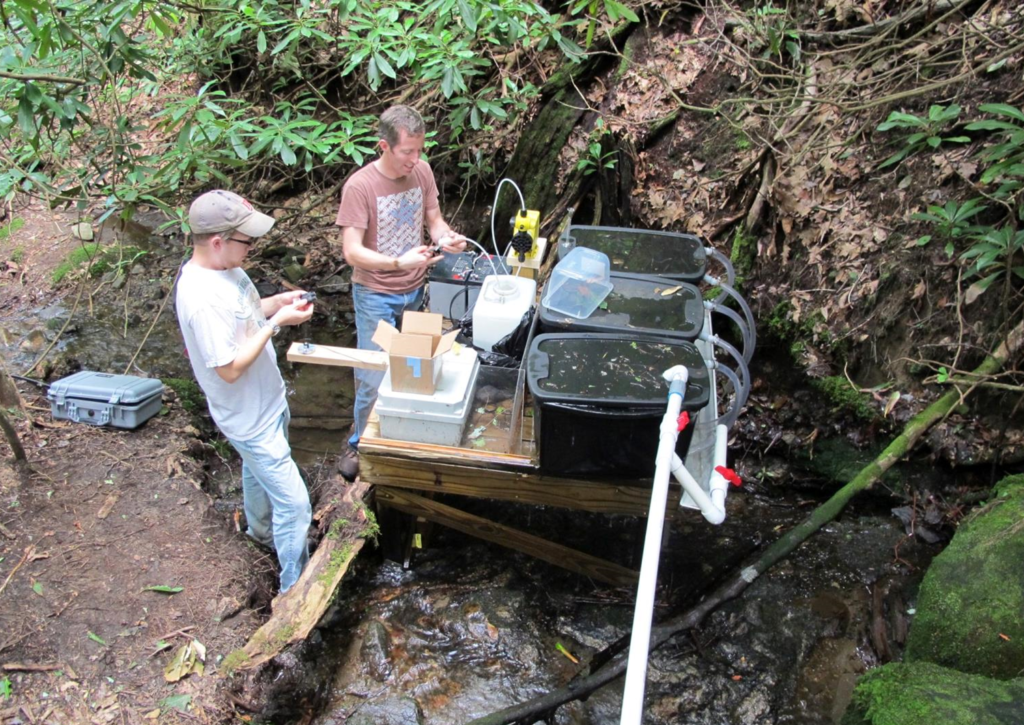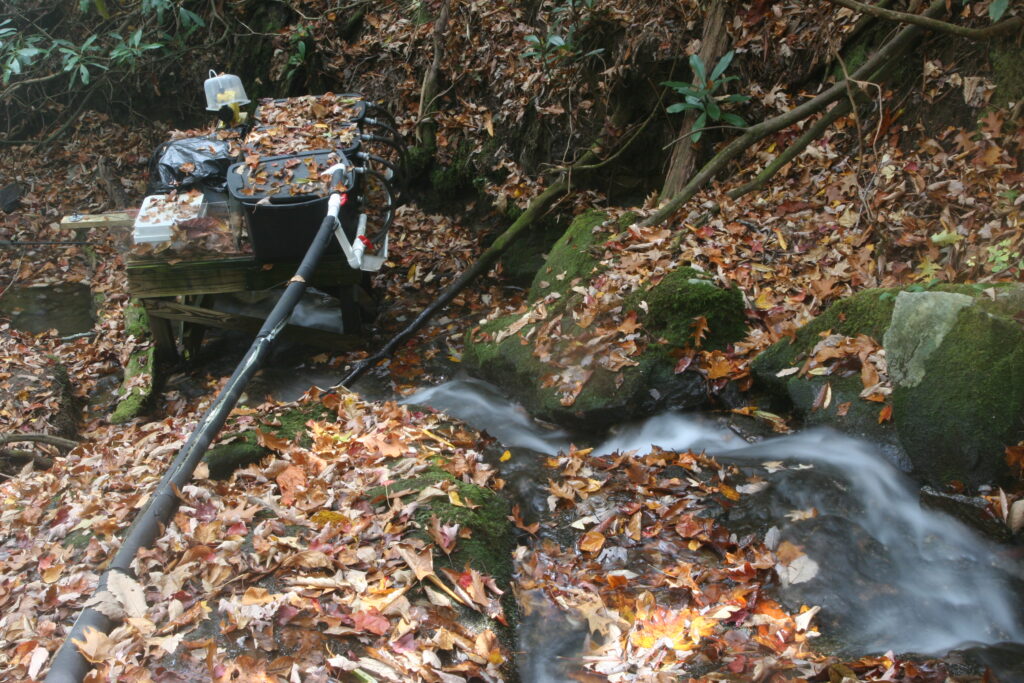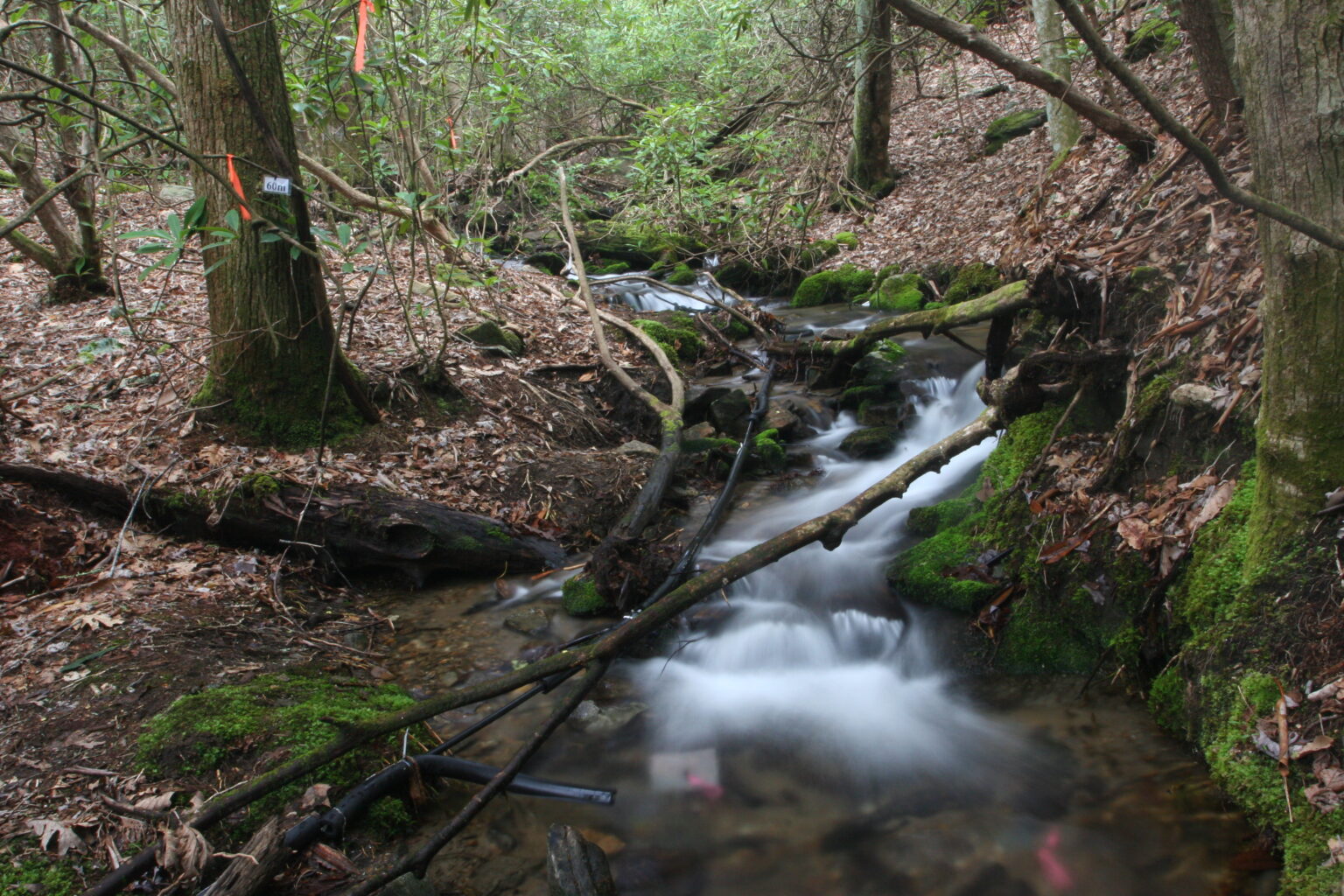Phosphorus and nitrogen are critical to agriculture. They’re also a leading cause of impairment to our water bodies.
Few nutrients are as fundamental to or ubiquitous in modern life as nitrogen and phosphorus. As fertilizers, they form the bedrock of our global agricultural systems—but at a cost to our waterways.
While nutrient pollution’s impact on lakes and estuaries has been well-studied, new research out of the Odum School of Ecology’s Rosemond Lab, along with colleagues at the University of Alabama and Coastal Carolina University, examines the effect of nitrogen and phosphorus on a stream’s ability to store nutrients. It’s a service we rely on to prevent eutrophication, or excess nutrient enrichment, downstream.
In a paper published in Limnology and Oceanography, led by research coordinator Phillip Bumpers, the team found that headwater streams face a reduced capacity to store nutrients when enriched.
Doing less with more
In deciduous forests, autumn shed leaves and twigs fall to the forest floor and many end up in small headwater streams where they provide a seasonal pulse of energy (food) resources and habitat for stream organisms. Leaves and wood also provide an additional and less obvious service in streams: The microbes (e.g., fungi) that live on their surfaces capture and retain nutrients like nitrogen and phosphorus, increasing the nutritional quality of food for animals and protecting downstream systems from nutrient pollution.
The team experimentally enriched their small, headwater study streams in the Southern Appalachians—carefully chosen for having similar attributes—over two years, adding nitrogen and phosphorus to test the stream-reach impact on nutrient storage, which slows the downstream transfer of the elements.


Organic matter decomposes more quickly when more nutrients are available because of increased microbial activity. Less organic matter stays in the stream because large particles like leaves and wood are decomposed into small particles that easily flow downstream.
The team measured the amount and nitrogen and phosphorus content of all types of organic matter throughout the year. They found that, because organic matter decomposes so much more quickly with nutrient pollution, fewer nutrients bound up in leaves, wood and other particles are retained in the stream year-round. The nutrients otherwise bound up in leaves and associated microorganisms are now on the move in the form of small particles. This also means there is less food in the stream for animals year-round.
“We’re thinking about what’s happening in these systems at the top, about how this is a pervasive problem from the headwaters all the way down to the Gulf,” explained Bumpers. “They’re all linked…once a nutrient gets in the headwaters [small streams], it’s processed all the way down. If we don’t have [microbes] there to retain it and slow it down, we’re going to send more nutrients [more quickly] down to our reservoirs, our lakes and our estuaries.”
That’s a problem, since excess nutrients can lead to algal blooms, resulting in steep decreases in dissolved oxygen in water and sometimes producing toxins harmful to wildlife and people.
“It’s unfortunate,” said Amy Rosemond, UGA Foundation Professor in Ecology at the Odum School of Ecology. “We think these systems are going to provide this function for us—taking up pollutants before they move downstream. But in fact, these pollutants are reducing the capacity of those systems to retain nutrients and perform that service.”
Critically, this reduction in ecosystem services was observed at relatively low to moderate levels of enrichment during the study: The amount of nitrogen and phosphorus researchers released was lower than what many waterways experience from pollutants.
Nutrient pollution is pervasive
The issue of excess nutrients in streams due to things like leaky urban infrastructure and agricultural runoff is pervasive. A 2019 EPA report showed that in the U.S., 58% of streams and rivers are in poor condition due to excess phosphorus and 43% due to excess nitrogen.
Wastewater treatment plants can implement infrastructure to recycle nutrients, both harvesting them for reuse and keeping them out of our waterways. That’s vital. Because while it might be easy to assume that when exposed to more nitrogen and phosphorus, streams simply store more, this study indicates that’s not the case.
There are many other solutions to reducing nutrients, including the precision application of fertilizers and maintaining streamside vegetation. “For streams to continue to provide services for us, we need to give them a little care too,” Rosemond said.
This research was funded by a National Science Foundation grant.

